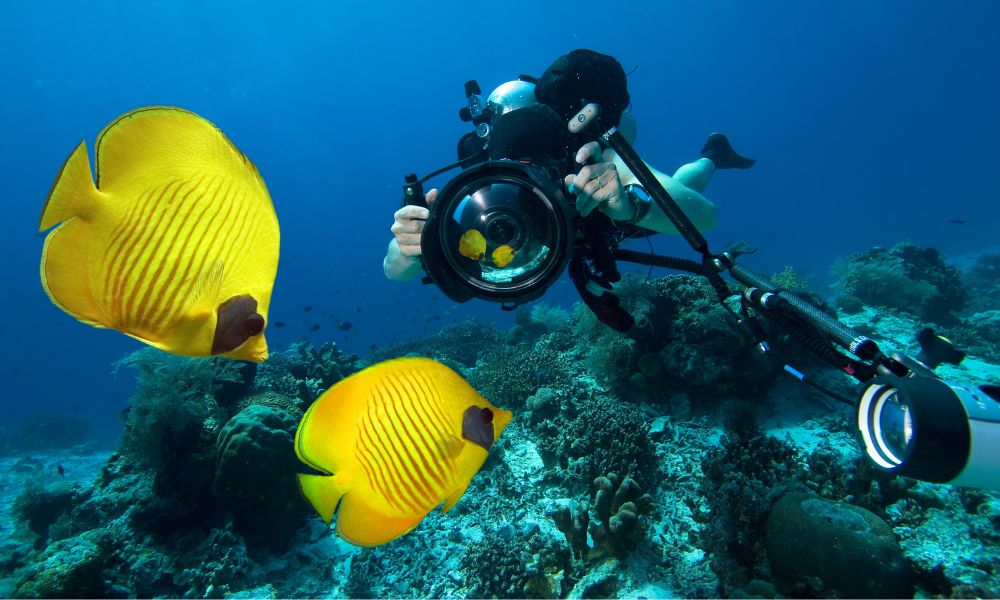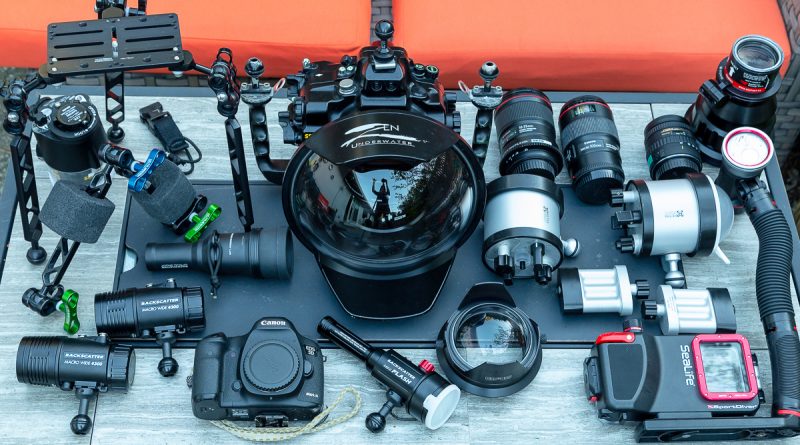
Underwater photography opens a window to an enchanting world teeming with vibrant marine life, mysterious wrecks, and landscapes that seem like they’re from another planet. Capturing the essence of this underwater realm demands the right tools, skill, and patience. Enhance your underwater photography skills with our top tips for success.
1. Invest in Your Equipment

The quality of your underwater images heavily depends on the gear you use. While it’s tempting to go for budget options, investing in high-quality cameras, durable underwater housings, and specialized lighting equipment can significantly enhance your photographs.
Aside from your camera and waterproof housing, you’ll need certain essentials to capture the perfect shots.
- Wide-angle lenses for capturing expansive sea landscapes and close-fitting reef scenes
- Macro lenses are perfect for detailed shots of marine life
- Trays and arms to mount your camera and flashes and provide stability
- External flashes or strobes to illuminate the underwater world and bring out the vivid colors
While upfront costs might be higher, the investment pays off in the form of breathtaking images that truly capture the essence of the ocean.
2. Find the Right Location
The underwater environment you choose to explore dramatically influences the kind of photographs you can take. One of the many fun facts about Indonesia’s Triton Bay marine life is it is home to a diverse group of small denizens. Triton Bay offers multiple opportunities to test your macro lens and capture the intricate details of some of the most expansive and tiny marine species.
For vibrant coral reefs teeming with life, locations such as the Great Barrier Reef in Australia or the rest of the Coral Triangle in the Asia-Pacific region are unparalleled. For those fascinated by history and wreck photography, the clear waters and well-preserved wrecks of the Red Sea might be the perfect fit. Your location also affects water clarity, crowdiang, and diving skill requirements.
3. Perfect Your Buoyancy
Underwater photography involves more than just camera skills—it also requires proficient diving skills. Controlling your buoyancy is critical in underwater photography. Buoyancy skills lead to better images and guarantee the safety of both you and the reef’s delicate ecosystems. It helps you maintain your position and compose your shots without disturbing the marine environment or kicking up sediment. Underwater photography is as challenging as it is rewarding, offering a glimpse into a world few get to see. With these top three underwater photography tips, you can guarantee more successful shots that will capture the underwater world’s true beauty.



